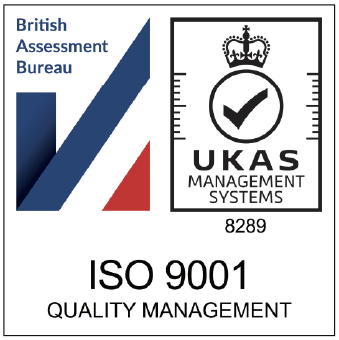When it comes to order fulfilment and logistics, there are a number of different strategies and models to choose from. The key is finding the one that best suits your own business needs.
One that causes a lot of confusion, though, is when it comes to 3PL and 4PL logistics providers. While it’s only one single number that separates them, these two solutions can have a significantly different impact on your eCommerce business. Get it wrong, and it could seriously cost you.
What is a 4PL logistics company?
To begin with, the meaning of the phrase ‘4PL’ is ‘fourth party logistics’ provider.
A 4PL is a step above a 3PL. Often, a fourth party logistics provider will actually manage 3PLs on behalf of their client. Along with this, they make themselves responsible for the supply chain as a whole, managing and optimising everything from initial resources to the overall infrastructure.
You could see a 3PL as the working hands of a logistics chain. The 4PL, meanwhile, puts themselves in control of what those hands are doing. Rather than organising daily operations, they provide more of a total overview of each piece of your business’s logistical puzzle and how they all fit together.
The goal of using a 4PL service is to have one point of contact for every aspect of your supply chain. They will oversee each cog in your machine, including your warehouses, courier services, freight forwarders, customs agents – everything that involves getting your product from A to B will be supervised by your 4PL.
So, what is the point of all of this?
By syncing up your entire supply chain, a 4PL can analyse the efficiency and profitability of it as a whole. They are usually experts in strategy, project management and analysis, helping you find the best ways to streamline your business and keep costs to a minimum.
Related: What is a Third Party Logistics Provider?
What’s the difference between 3PL & 4PL logistics?
To fully understand what a 4PL is, it’s often good to get an idea of how they differ from a 3PL.
3PL and 4PL logistics are probably the two most talked about supply chain services for many businesses. If chosen correctly, they can both be of huge value to eCommerce stores, retailers, wholesalers and suppliers looking to grow their brand’s reach.
Let’s break down exactly what differentiates a 3PL and a 4PL…
- A 3PL handles one part of the supply chain – the logistical process
- A 4PL oversees every part of the supply chain – taking a 360 view of every component
- A 3PL focuses on daily operations, physically helping you get your products from the factory to your customers
- A 4PL focuses on the big picture, looking at how to integrate and optimise the entire chain from start to finish
- A 3PL may be just one of many points of contact you have for your supply chain
- A 4PL aims to be the single point of contact for the entire supply chain and multiple logistics services
- A 3PL often owns warehousing and courier contracts to share with their clients
- A 4PL usually doesn’t own any assets but rather shares their management, analysis and optimisation expertise
It’s important to remember that while a 3PL does differ from a 4PL, that doesn’t mean they aren’t as good.
Instead, you should focus on which one best suits your particular needs.
4PL advantages & disadvantages
As with a 3PL, or any type of business model, there are both advantages and disadvantages to working with 4PL. So, it’s essential that you understand what those are before deciding whether to invest in one…
Advantages of a using 4PL provider
A common reason why companies choose to use a 4PL is when their supply chain reaches a new level of complexity.
A 4PL works with a client to implement an overarching strategy that is designed exclusively to improve their supply chain. They can help you identify areas for improvement and develop a solution, while taking complex matters into their own hands for you.
This often results in:
- Cost reduction
- More efficient processes
- Sourcing the most cost-effective services
- Strategic improvements to your supply chain
Of course, there are plenty of advantages to using a 3PL, too. Again, it’s more about choosing which one suits your own requirements best.
Disadvantages of using a 4PL provider
So, what are the downsides of using a 4PL provider?
First of all is the expense. To work with a 4PL, you need to be sure you have the costs completely covered and are confident that it will be worth the investment. It will only really be worth your while if your business is on a large scale, with multiple logistics services, suppliers and networks in the mix. If your business is not at this level yet, it’s likely you won’t see the full benefit.
You will also need to be happy with the idea of passing over a significant amount of control to your 4PL partner. If you prefer to be more hands on with the operational and strategic side of your supply chain, this might not be the best solution for you.
3PL vs 4PL – which is best for your business?
Once you have thoroughly researched how a 4PL company works and how it differs from third party logistics, you need to put some consideration into which one would work best for you.
As we have already mentioned, a 4PL provider is not necessarily better than a 3PL company. They just do a slightly different job.
The main determining factor when making the decision is the scale of your business.
For small to medium sized businesses, partnering with a 3PL is often most beneficial. Don’t forget, most third party logistics companies are excellent at managing some of the key components of your supply chain, including stock storage, packing and dispatching, freight forwarding, inventory management and much more. This allows you to focus on growing sales and marketing tactics while your business expands at a sustainable rate.
For larger businesses who have already achieved this and ready to take a major expansion and investment, a 4PL provider might be a more lucrative option.
Do you want to know more about whether third party logistics will benefit your business? Have a chat with 3PL today and we’ll explain more.
More from the 3PL blog…
5 Ways to Improve Your Order Fulfilment Process | What is the Best Way to Manage & Keep Control of My Inventory? | How Do I Choose the Right Order Fulfilment Partner?
Speak to 3PL about your order fulfiment
It’s time to supercharge your business and overtake your competitors. Speak to 3PL today and find out how we can take your ecommerce and B2B fulfilment to the next level.


